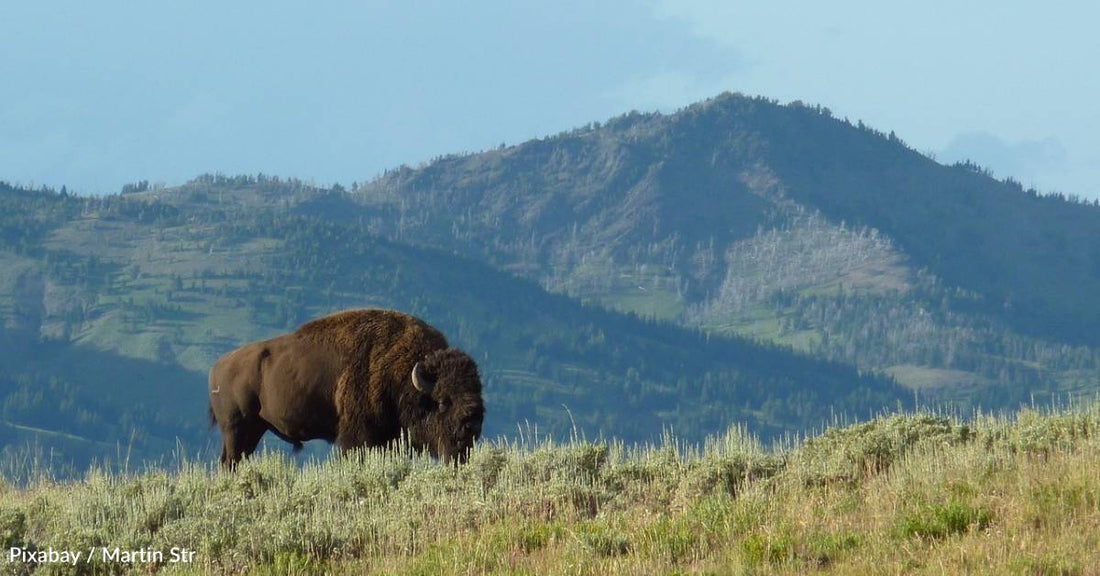The U.S., Canada, and Mexico Sign New Agreement to Promote Bison Restoration
Michelle Milliken
Pixabay / Martin Str
American bison were once found across nearly two-thirds of the North American continent, from interior Alaska to northern Mexico. At the time, they numbered in the tens of millions, but their population ultimately fell to right around 1,000 due to overhunting during western expansion. Though their numbers have rebounded a bit since then, they’re still only present on just over 1% of their historic range. An intergovernmental agreement is working to change that.
The U.S. Fish and Wildlife Service, Parks Canada, Environment and Climate Change Canada, and Mexico’s Secretariat of Environment and Natural Resources have signed a new agreement to strengthen their collaboration on American bison restoration efforts. A letter of intent shows they’ll work not only on species conservation but also on restoring ecological processes and supporting the traditional use of bison by Indigenous people.

They also aim to provide transparency as they develop information on the effort, as well as to report on their activities to the Trilateral Committee for Wildlife and Ecosystem Conservation’s executive table. The trilateral committee was launched nearly 30 years ago as a multi-agency partnership to help align efforts to protect North America’s wildlife and ecosystems.
U.S. Interior Secretary Deb Haaland says, “While the overall recovery of bison over the last 130 years is a conservation success story, significant work remains to ensure that bison will remain a viable species. Our collaborative efforts with Canada and Mexico are an important step forward as we work to restore this majestic species and facilitate the return of bison to Tribally owned and ancestral lands.”

The FWS says the agreement also builds on recent efforts made by the Department of the Interior, including a 2023 Secretary’s Order that announced $25 million in funding to help the agency and its partners use both the best available science and Indigenous input to restore bison in the United States. It also created a Bison Working Group tasked with developing a shared stewardship plan for restoration.
On the northern end of this latest agreement, Parks Canada President and CEO Ron Hallman says, “The ongoing collaboration between the U.S. Department of the Interior, the Ministry of Environment and Natural Resources of the United Mexican States, the Department of Environment and Climate Change Canada, and Parks Canada is critical to the conservation of bison – North America’s largest land mammal. This transborder relationship provides an opportunity, guided by a diversity of science-based and Indigenous knowledge, in collaboration with Indigenous peoples and others, that will continue to improve the health and resiliency of bison across their varied environments.”

Meanwhile, Mexico’s National Commissioner for Natural Protected Areas, Humberto Adán Peña Fuentes, adds, “The continued presence of bison in the territories they have historically occupied represents a highly successful reintroduction program of this species in our country and reinforces the strong bonds of friendship between the three nations, solidifying a collaboration that greatly contributes to the protection of our shared biodiversity.”
Despite conservation efforts, bison do still face a variety of threats, including habitat loss, hybridization with cattle, climate change, and low genetic diversity within individual herds.
Michelle has a journalism degree and has spent more than seven years working in broadcast news. She's also been known to write some silly stuff for humor websites. When she's not writing, she's probably getting lost in nature, with a fully-stocked backpack, of course.




















